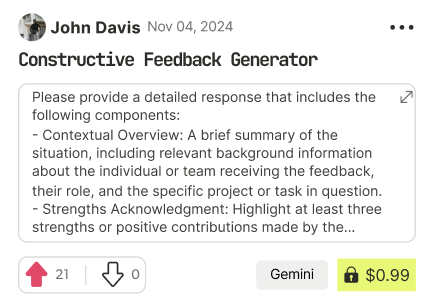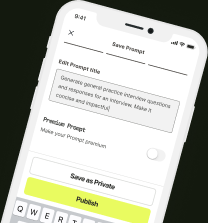prompt mine App
Find, Create & Share AI Magic
7-Day Accelerated Upskilling Plan: Mastering Basic SQL for Data Analysis (Beginner)
Skill: Mastering Basic SQL for Data Analysis
Current Experience Level: Beginner
This plan is designed for busy professionals to build foundational SQL skills in one focused week. Allocate 30-60 minutes daily.
Day 1: Introduction & Core Concepts
Objective: Understand what SQL is, its purpose, and basic database structure concepts (tables, columns, rows). Learn SELECT statements.
Resources:
Article: "What is SQL?" (e.g., from Codecademy blog)
Tutorial: Khan Academy's "Intro to SQL" (first few videos)
Tool: Online SQL editor (e.g., SQL Fiddle, W3Schools SQL TryIt Editor)
Exercise: Practice writing simple SELECT FROM table_name; queries on a sample database provided by an online editor.
Day 2: Filtering Data
Objective: Learn how to filter data using the WHERE clause and common operators (=, !=, >, <, >=, <=).
Resources:
Course Module: Codecademy's "Learn SQL" (Filtering section)
Tutorial: W3Schools SQL WHERE Clause tutorial
Exercise: Filter data based on numerical and text criteria (e.g., SELECT FROM orders WHERE amount > 100;, SELECT FROM customers WHERE city = 'New York';).
Day 3: Sorting and Limiting Results
Objective: Understand how to sort data using ORDER BY and limit results using LIMIT (or equivalent like TOP in SQL Server).
Resources:
Course Module: DataCamp's "Introduction to SQL" (Sorting/Limiting section)
Tutorial: SQLZoo (Select with ORDER BY)
Exercise: Sort results by different columns (ascending/descending), limit the number of rows returned.
Day 4: Aggregation Functions
Objective: Learn common aggregate functions (COUNT, SUM, AVG, MIN, MAX) to summarize data.
Resources:
Tutorial: W3Schools SQL Aggregate Functions
Article: "Understanding SQL Aggregate Functions"
Exercise: Calculate the total number of records, the sum/average of a numerical column, find the minimum/maximum value.
Day 5: Grouping Data
Objective: Combine aggregate functions with the GROUP BY clause to perform calculations on sets of rows.
Resources:
Course Module: Khan Academy's "SQL GROUP BY"
Tutorial: SQLBolt (Lesson 6: GROUP BY)
Exercise: Group data by a category and calculate aggregates (e.g., SELECT city, COUNT() FROM customers GROUP BY city;).
Day 6: Introduction to JOINs
Objective: Understand the concept of relational databases and perform basic INNER JOINs to combine data from two tables.
Resources:
Tutorial: W3Schools SQL INNER JOIN
Article: "A Visual Explanation of SQL Joins"
Exercise: Join two simple tables (e.g., orders and customers) and select data from both.
Day 7: Practice & Review
Objective: Consolidate knowledge by working through more complex problems involving all learned concepts.
Resources:
Platform: HackerRank SQL Practice Problems (Easy/Medium)
Platform: LeetCode Database Problems (Easy)
Cheatsheet: Basic SQL Syntax Cheatsheet
Exercise: Attempt 3-5 practice problems that require filtering, sorting, grouping, and basic joining. Review syntax and concepts learned throughout the week.

Find Powerful AI Prompts
Discover, create, and customize prompts with different models, from ChatGPT to Gemini in seconds

Simple Yet Powerful
Start with an idea and use expert prompts to bring your vision to life!

